One of the most frequently asked questions I get is, “What kind of sights should I put on my pistol?” or “Can you change the sights on my pistol?” Unless you purchase a custom made pistol, chances are you’ll do better if you replace the stock sights – especially on a GLOCK pistol – which are plastic. In fact, if you own a GLOCK, you should consider the stock sights to be nothing more temporary placeholders. Oftentimes, when I’m working with a shooter to increase accuracy we find that they normally shoot better with MY gun than their own. Why? Because I have better sights. If you can’t aim properly (because you can’t really see the sights that well, you will never be a great pistol shooter.
There are several sight types, shapes, sizes, etc. Let’s see if we can break it down a bit.
There are so many shapes I can’t name them all. GLOCK pistols come with a front 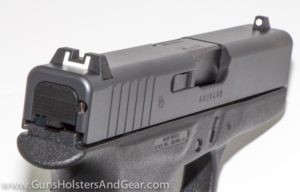 dot and rear field goal (u-notch) sights. Put the dot in the middle of the field goal and you’ll hit. The problem is how high should that front dot be? Do you line up the top of the dot with the top of the goal posts or the line up the bottoms? The field goal sight that comes on the GLOCK is equivalent to shooting a rifle with iron sights.
dot and rear field goal (u-notch) sights. Put the dot in the middle of the field goal and you’ll hit. The problem is how high should that front dot be? Do you line up the top of the dot with the top of the goal posts or the line up the bottoms? The field goal sight that comes on the GLOCK is equivalent to shooting a rifle with iron sights.
Three dot sights are the old standard, with one dot up front and two in the back. Line up the dots and you’ll hit your target.
The first sights I put on my first GLOCK, a 9mm model 26, had a tritium front dot and a rear ghost ring. The idea was to put the front dot inside the large rear ring and you’d hit the target. It worked.
There are folks that swear by their straight-eight sights. One dot up front and one dot in the rear. Sit the front dot on top of the rear dot so it looks like a figure eight and you’ll nail it.
Some folks prefer the rear sight to be plain black. Often the rear sight is a wedge or v-shape and one sits the front dot in the wedge. The blackened rear sights don’t distract you from that all-important front sight focus.
Once you determine the shape, that works best for your eyes – and your planned reason for shooting – which could be competition, self-defense or just bragging rights, it’s time to look at paint vs. fiber optic vs. tritium.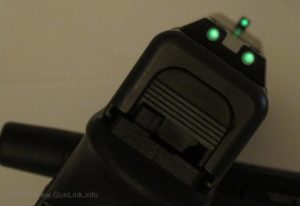
Painted sights cannot be seen in the dark or even dim light. It’s nothing but regular paint creating the dot. Tritium sights, called night sights by new shooters, actually produce light. They are self-luminous from the tritium (a radioactive isotope of hydrogen) vial inside the dot. While tritium lamps are great in low or now light, they aren’t easy to see in broad daylight. The tritium only lasts about 10 years and must be replaced. Fiber optic sights actually gather ambient light into a tube and enhance the brightness of the sight dot. The brighter the light, the brighter the sight. However, in the dark, they cannot be seen. The fiber optic tubes can be fragile, but are easily replaced, once you know what you’re doing. Truglo sells sights that combine both tritium and fiber optic technology. I have Truglo TFX sights on my GLOCK 43. I’ve been impressed with GlockMeister’s new Tactical Sight. It has an orange ring around the front sight to catch your eye, with subdued rear dots that glow. It’s a Truglo TFX sight.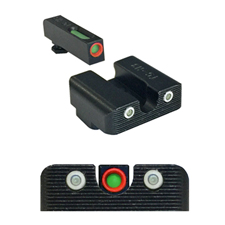
The latest breakthrough in sight technology has happened in the past five years. Most AR shooters are using red-dot sights to eliminate the front sight – rear sight line up problem. Put a red-dot sight on your carbine and all you have to do is put the red-dot on the target and pull the trigger. It couldn’t be simpler. Trijicon pioneered this technology in a Ruggedized Miniature Red-dot sight for pistols. The RMR comes in several different flavors. The size of the red dot itself, the power (battery or solar), the adjustment options are all involved. I was a trail blazer in this area. I’ve had an Trijicon RMR on both my GLOCK 19 and GLOCK 26 for many years. GLOCK is now selling their MOS (Modular Optic System) for the practical-tactical pistols (34/35) as well as the duty and carry sizes (17/19) finally. As the power options and optics technology increases, we will see the red-dot take over the market for defensive carry. It’s so simple, new shooters and older eyes can both make quick, very accurate shots with little or no training. Nearly every major gun manufacturer (GLOCK, Smith & Wesson, SIG Sauer, etc.) are now offering RMRs for their pistols.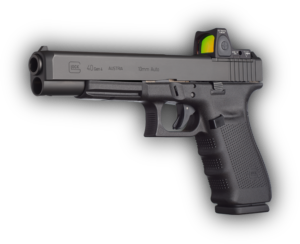
Which size/shape/tech are the right mix for you? Only you can know that, but I can certainly help you play around and try everything from white post and notch, tritium, fiber optic, truglo, to RMRs.
Let’s go to the pistol range!
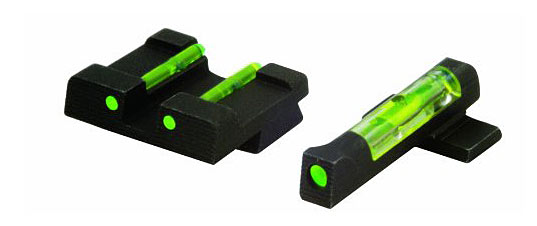
Thanks a lot for sharing this great article, I really appreciate the hard work you have put in. Will recommend your site to my friends for sure.